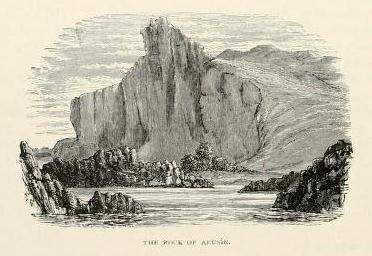By Anna J. Clutterbuck-Cook, Reader Services
Today we rejoin our anonymous female diarist as she journeys down the Nile in the winter of 1914-1915. You can read previous installments of this series here (introduction), here (Cairo to Aysut), here (Aysut to Asswan) and here (Asswan to Abu Simbel).

Image: “The Oriental Lounge of the Cataract Hotel at Assuan,” from Douglas Sladen, Queer Things About Egypt (1910)
In today’s entries, our diarist tours various sites on the border of Egypt and Sudan, in an area today bordering (and in some cases subsumed by) the Lake Nasser/Lake Nubia reservoir. In one case, visiting the Temple Kalabsha, she would have seen the temple in its original location nearly half a century before it was moved to accommodate the rising waters of the lake as the Aswan Dam was constructed (between 1958-1971).
On December 15th our narrator departs the steamer on which she has been traveling and takes the train north to Asswan once more, where she checks into the Cataract Hotel at which she will spend her Christmas holidays. These entries continue to illustrate how, as an American tourist, she experienced the country through which she traveled, and the people she encountered there.
Dec. 11. A.M. wrote post cards & at lunch we arrived at Wadi Halfa. Went on shore after lunch & walked around, then went up to train and saw people off for Khartoum. Went to P.O. for stamps. After tea went ashore again with dragoman & walked through [illegible phrase]. Saw Nubian village & then Sudanese on the desert.
Dec. 12. Had early breakfast & left in small boat at 8:30. Miss M. did not go. Were rowed across first to shore & then towed along for about an hour’s ride. Then landed & got onto donkeys & rode over the desert to the rock of Abu Seer, 1 ½ hours. Went up on rocks & saw two [illegible word] shoot the rapids. Rode back to river bank & had lunch in a little hut there. Then visited Temple of [illegible phrase] took boats again & were rowed back to our steamer in time for tea. After it wrote a letter. Fine full moon.

Image: “The Rock of Abusir” from Amelia B. Edwards, A Thousand Miles Up the Nile (1890)
Dec. 13. Had early breakfast & at 8:30 went ashore in row boats to see rock temple of Sebel Addeli 4 papyrus columns with bud capitals — used as a Christian church. Soon after leaving this we passed Abu Simbel again. Wrote till noon time. Sailed along all the afternoon.
Dec. 14. Reached Kalabsha just at breakfast & immediately after went ashore — a large group of [visitors?] – went to rock temple of Beit-El Wali, a vestibule [illegible phrase]. Only side walls of vestibule standing, interesting historical reliefs. Some coloring in the hall & sanctuary. Then went back to river, took boats & rowed into temple of Kalabsha, which is partly submerged — never finished — has [illegible phrase] rooms — 1st vestibule has [illegible word] columns with floral capitals, the roof is gone. The other 3 rooms have walls, preserved reliefs with vivid coloring. Arrived at Shellal at noon. Most of people took 3pm train to Asswan. After they had gone Miss M., Miss Gillender & I had a boat & went around to Philae & back for tea & stayed on boat overnight.
Dec. 15. Left Prince Abbas* after an early breakfast at 7.30 & took 8.30 train to Asswan going to Cataract Hotel to get room. Then walked round to steamer “Arabia” and made a call on the Phelps’, stepping into Cook’s on the way. After lunch lay down & slept, then sat on my balcony & watched sunset then went down & wrote till dinner. Talked with two English ladies in evening.
In our next installment, we’ll see how our diarist’s routines change (as well as stay the same) once she is no longer traveling daily from place to place but instead residing in a fixed location with a revolving cast of European guests.
*The first mention of it in this diary, I believe Prince Abbas may be the name of the boat our diarist had been staying on.

